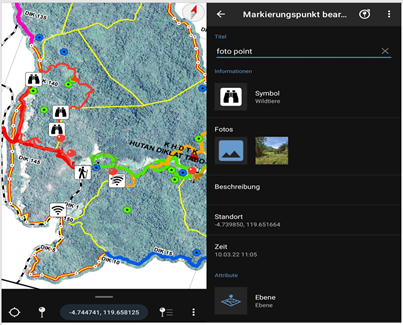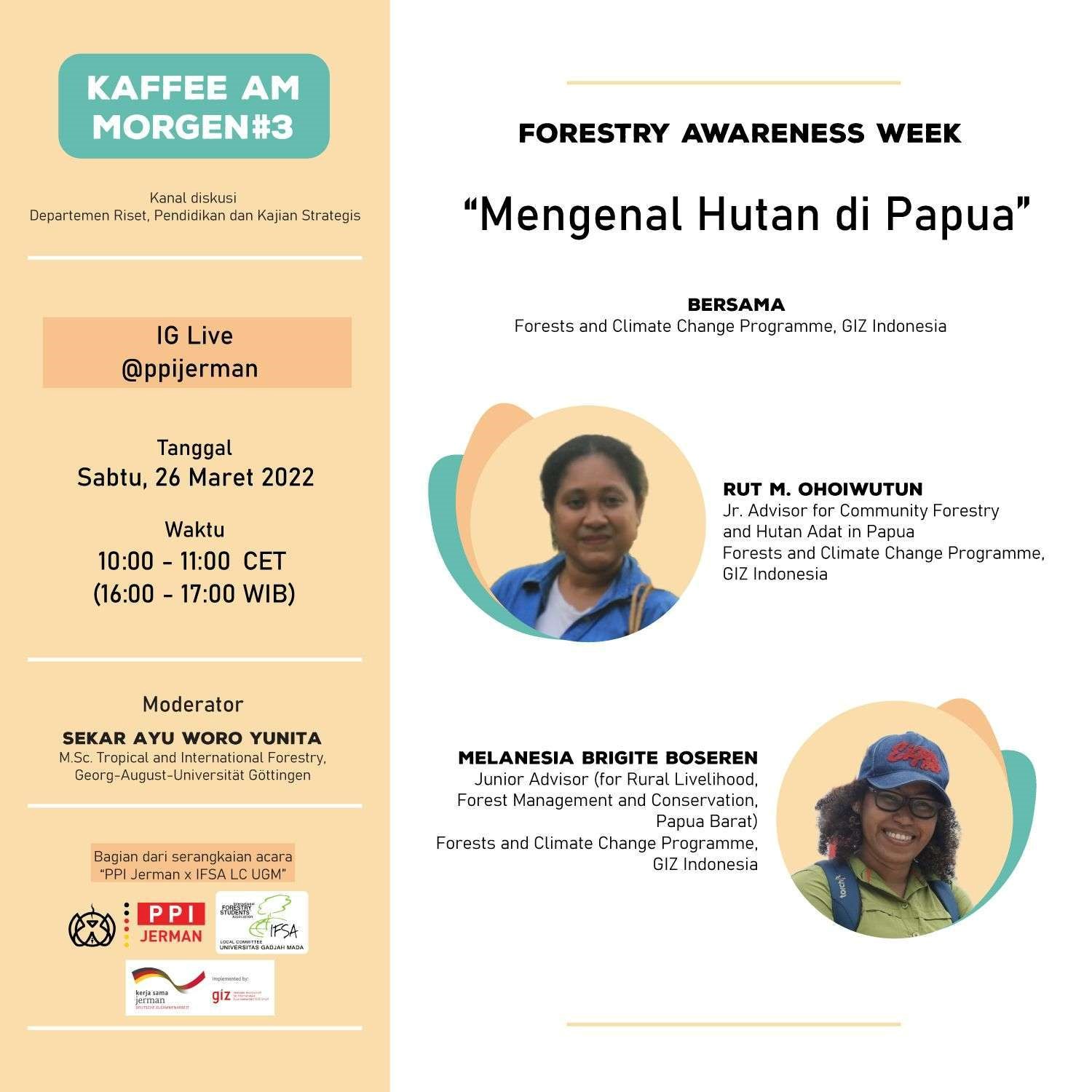FORCLIME
Forests and Climate Change ProgrammeTechnical Cooperation (TC Module)

Select your language

In order to ensure safe and plannable navigation of the Tabo-Tabo Education Forest, the Environment and Forestry Training Center in Makassar (BDLHK Makassar) and the forest farmer group (KTH) Deswita’s youth ecotourism group in Tabo-Tabo, are in the process of developing a digital map that will help visitors to safely navigate the Tabo-tabo Education Forest, even if they do not have any phone signal. This initiative is expected to stimulate the development of tourism activities in the area.
FORCLIME is supporting the development of this digital map, specifically through surveys and the location of points of interest, tracking roads and rescue points. The data and pictures that are collected will ultimately be integrated into the digital map and marked with relevant icons so that visitors will know what they are likely to encounter at each location. Furthermore, FORCLIME is also training KTH Deswita members to create such points of interest through the Avenza Maps application. This activity has been ongoing since January 2022 and should be finalized by June 2022.
For more information, please contact:
Daniel Maertz, Advisor for Adult Education and Training
Edy Marbyanto, Strategic Area Manager for Human Capacity Development
In order to support the Center of Environment and Forestry Education and Training (CEFET) in the development of the interactive eLearning module, FORCLIME has hired two interns that have been tasked with converting a conventional module into e-book format. The two interns from IPB University first joined FORCLIME back in November 2021. After a consultation process with CEFET, it was agreed that a training module on Ecotourism Interpretation would be converted by the interns.
The interns successfully completed the task of converting the entire Ecotourism Interpretation module, which comprises four chapters, at the start of March 2022. Subsequently, in March 2022, a series of meetings were held with Widyaiswara (a CEFET lecturer) in order to refine the draft eLearning module. Improvements were also developed through a process of intensive consultation with the original author of the module.
The eLearning module on Ecotourism Interpretation was ultimately finalized at the end of March 2022 and uploaded to the Learning Management System server owned by CEFET. The plan is for the module to be used as a set of teaching materials during a blended learning programme (a combination of online and offline training) that is set to be held by CEFET in May 2022.
For more information, please contact:
Wira Hakim, Junior Advisor for Human Capacity Development
Edy Marbyanto, Strategic Area Manager for Human Capacity Development

In order to commemorate International Day of Forests, which falls 21 March, the Indonesian Student Association (PPI) in Germany and the Indonesian International Forestry Student Association (IFSA) recently held a series of events, including Forestry Awareness Week. In order to support this activity, PPI Germany invited the Forests and Climate Change Programme (FORCLIME) to give an address under the theme “Knowledge of Papua's Forests”. This activity was streamed live via the Instagram Discussion Channel of the Department of Research, Education and Strategic Studies at PPI Germany on 26 March 2022 under the title “Morning Talk (Kaffe AM Morgen)”. The Morning Talk event was moderated by Sekar Ayu Woro Yunita, a master's student in Tropical and International Forestry, Georg – August – University of Gottingen. Speaking on behalf of FORCLIME were Melanesian Brigite Boseren (Junior Adviser for Rural Livelihood, Forest Management and Conservation), Rut M. Ohoiwutun (Junior Advisor for Community Forestry and Customary Forest, Papua) and Mohammad Sidiq (Strategic Area Manager, Sustainable Forest Management and Coordinator for Papua and West Papua Provinces).
During the Morning Talk event, FORCLIME introduced a number of programmes that are currently being implemented and that are set to be implemented in Tanah Papua. Other topics addressed during the Kaffe AM Morgen encompassed:
• The condition of the forests in Papuan Land (Tanah Papua) and the uniqueness of the Tanah Papua’s forests, with particular focus on what distinguishes them from other Indonesian forests.
• The primary non-timber forest products that are produced in Tanah Papua.
• The wisdom and traditions of local communities in relation to the management of natural resources and forests.
• The role of women in forest management in Tanah Papua.
The discussions at the event were informal but proved interesting, given that not all of the Kaffe AM Morgen participants were forestry practitioners. The hope is that through such activities, both forestry and non-forestry practitioners will gain an understanding of the importance of Tanah Papua’s forests so that they will be able to make a productive contribution to the wise use of forests and natural resources in the future.
For more information, please contact:
Melanesia Brigite Boseren, Junior Adviser for Rural Livelihood, Forest Management and Conservation, West Papua
Rut M Ohoiwutun, Junior Advisor for Community Forestry and Customary Forest, Papua
Mohammad Sidiq, Strategic Area Manager, Sustainable Forest Management and Coordinator for Papua and West Papua Provinces
 |
Supported By: |
  |